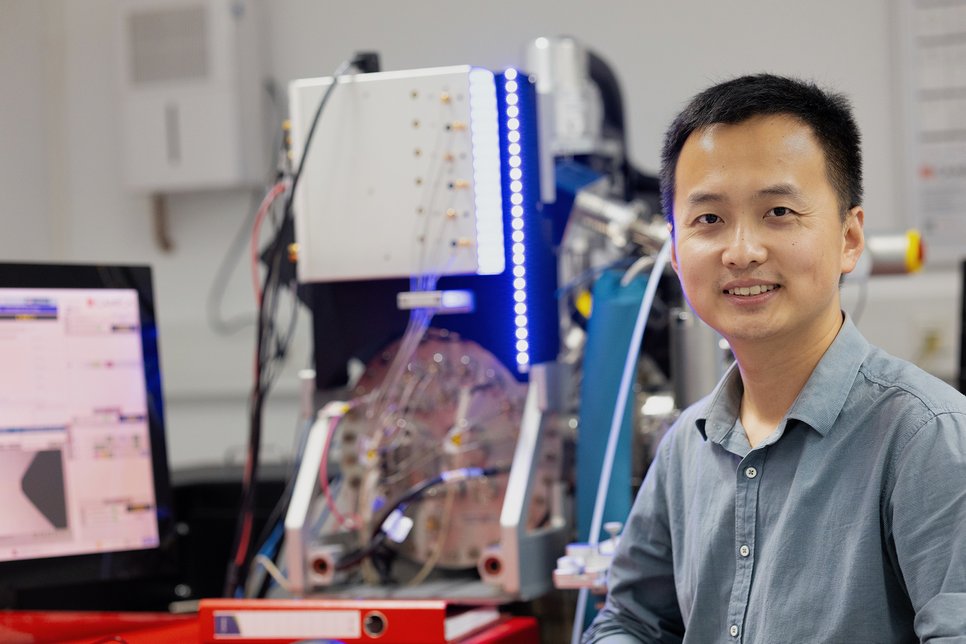Analysing lunar rocks at the atomic scale
Dr. Qian Fang joins the Max Planck Institute for Sustainable Materials with a Humboldt Fellowship

With a Humboldt Research Fellowship in hand, geologist and mineralogist Dr. Qian Fang has joined the Max Planck Institute for Sustainable Materials (MPI-SusMat) to explore a very special set of samples: dust and rock from the far side of the moon. These samples, brought back by the Chinese Chang’e-6 mission, are the first ever collected from the side of the moon that is not visible from Earth.
At MPI-SusMat, Fang is using his stay to deepen his expertise in atom probe tomography (APT), a technique that allows materials to be analysed atom by atom. “At my home university in China, we recently installed our own atom probe facility,” he explains. “I’m here to collaborate with the experienced APT-group to fully understand and interpret the data generated through my last experiments back home.”
His research investigates how so-called solar winds, plasma streams mainly of ionized hydrogen and helium affect the surface composition of lunar minerals and bring resources to the Moon. Over time, these particles can change the chemical state of materials, such as transforming iron silicates/sulfates into metallic iron via hydrogen reduction. “This kind of natural reduction process is also called space weathering but different from weathering on Earth; it not only alters the mineralogy of the lunar surface, but may even affect how we observe the moon using remote sensing”, Fang says. In the long term, these processes could also be relevant for future lunar resource harvesting.
Although his background is in geology, Fang sees many parallels with the work at MPI-SusMat. “In the end, many of us focus on metal reduction and interaction between hydrogen and oxides/metals”, he notes. “Mineralogists talk about minerals, materials scientists talk about materials: each field uses its terminology but mostly both focus on solids and use similar facilities. I hope to combine insights from both fields.”
Fang has also published research about the Mars, despite the lack of physical samples. Using Earth-based Mars analogues and knowledge about Mars’ past climate, when the planet likely had water, he is investigating the possibility of ancient life on Earth and Mars. Through all these studies, Fang gradually moves into the field of astrobiology: “This is important for the preparation of studying samples that will be brought by the Mars mission Tianwen 3”, Fang says.
Qian Fang is a research professor in clay mineralogy and geomicrobiology at the China University of Geosciences in Wuhan. He did his bachelor to PhD studies at the same university, thereby having a one-year research stay at the University of Arizona (USA).
The Humboldt Foundation fosters academic collaboration between exceptional international scientists and researchers in Germany. Its fellowships are awarded to individuals with outstanding qualifications and distinctive research profiles. The freedom for recipients to select any host institution in Germany makes this award a significant honour for both, the researcher and the hosting institute.
